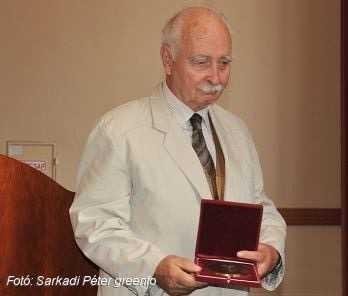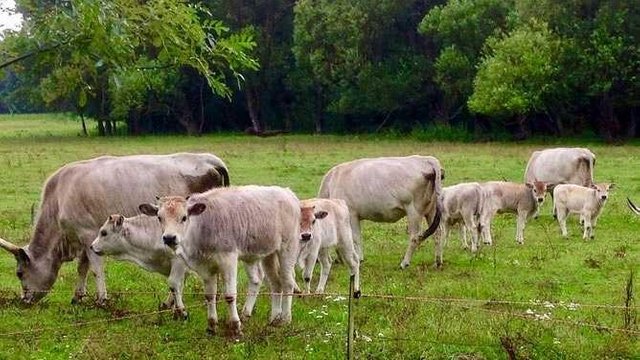The wonders of the Hungarian horn or stored works
I will tell you today about other Hungary (nationally owned by Hungarians) - unique cattle.
Hungarian gray cows (Hung magyar szürke Marha) are strong, beautiful, strong and very earthy, and not only in food - it surpasses even fierce sorokogradusnuyu snow. This is an ancient Hungarian breed.

Hungarian gray breeding (Magyar Surke) is under state control. At present, their livestock is around thirteen thousand. Most animals live in the eastern part of the country - in Hortoboa.
This amazing breed is not subject to ordinary disease and does not require expensive animal feed, or cradles. Grow fast and live for a long time, without needing comfort :)

In our day, this breed, which is considered a Hungarian national treasure, with five percent of its delicious milk and meat, does not threaten anything. He was interested in farmers from all over the world, but not always.

After the SIP, Hungary lost most of its land, including the loss of Transylvania, where the largest number of Hungarian livestock. For nurseries, Hungarians only have a Hortobágy Library.
After World War II, the Hungarian breed was really on the verge of extinction. And this, in principle, can be understood. Strong gray sheets are not needed for objective reasons. The same mechanization with / with errors. Besikes the Tractor came to replace the living Hungarian horn.
Subjective reasons were also - the Soviet government imposed a ban on Hungarian gray reproduction, writing special resolutions. Horned gray is prohibited. They fall, so to speak, under the hands of the hot proletariat, apparently, as petty bourgeois cows. We send almost all the horned cattle to the meat packaging factory ...
The remaining Hungarian cattle (less than two thousand) were covered by visiting the Kostroma bull, which was brought from the Soviet country.
So, in the early sixties, only six Hungarian bulls and two hundred live cows. Survive with miracles and thank those who protect their places of secrecy away from the country's farms. Risking a lot of people, including life. By the way, special camps for political prisoners are nearby, in the same Hortobad steppe.
Hungarian agricultural engineer Imre Bodo is one of those who participated in rescuing Hungarian descendants. For ten years he and his colleagues conspired to hide unique animals, maintain the integrity of breeds, and engage in illegal nurseries. They save and maintain a unique type, even though there are restrictions and contradicts the party's stupid line.
In 2013, Imre Bodo, a professor at the University of Debrecen, received a prestigious award for saving Hungarian gray descent. It's better to be late than Nikogla ...

One more question remains unsolved: where did this stored work come from? The question is complex, but there are at least three versions.
The first version: these animals participated in the so-called acquisition of native Hungarians of the country. That is, they came with them from the east in the ninth century.

Second: Hungarian descent is the result of taming a wild tour, which should have lived here before the Hungarians came here.
The third version: these cattle appear here with the emergence of nomadic Polovtsians (Turkish tribes) in the fourteenth century, when they fled the ubiquitous Mongols.
Livestock trade for Hungary is gradually becoming a very profitable business, hundreds of thousands of strong Hungarian cattle are employed and sold to Europe every year. For example, in the 16th century, thirty percent of the royal treasury was only filled with livestock trade.
At the beginning of the 20th century, Hungarian gray numbers were more than three and a half million animals in the country. Legends and myths form the durability of the Hungarian breed in gray. It is well known that Hungarian cattle can work, used to plow, at least two hundred seventy days a year. An impressive figure on a background of 60-70 days that is normal for other breeds.
To admire modern specimens from the Hungarian horn, there is no need to go to the Hortobad Nature Reserve. In our region of miracles Horned halls were also found, for example, in a small zoo named after them. Calculate Feshtich, where you can watch Hungarian gray, pofotkat, and videos to take.

Yes, I almost forgot, you can meet Hungarian gray still near the village of Kapolnapusta (Kápolnapuszta), the Balaton Uplands National Park area. A few kilometers from the village of Zalakaros (from our Vonyartsvashhed - 30 km), there is a place - a reserve of buffalo (Bivalyrezervátum Hung.), Where live flying are horned color wonders. We were there, and we will definitely return.

Congratulations @poklek! You received a personal award!
You can view your badges on your Steem Board and compare to others on the Steem Ranking
Vote for @Steemitboard as a witness to get one more award and increased upvotes!